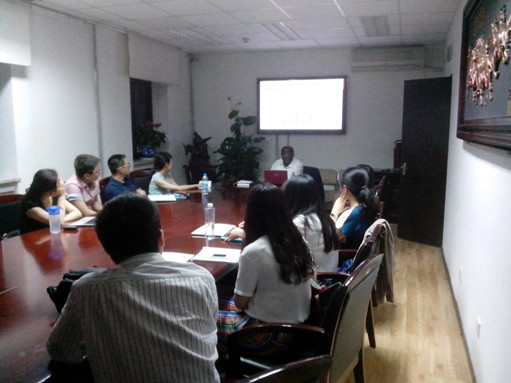Dr. Adams Bodomo, Professor of Linguistics and Director of African Studies Programme at the University of Hong Kong, presented the history and current development of African Diaspora in China for students at Tsinghua University on June 17, which provided the students with useful perspectives for future research in area studies or cross-culture communications.
The lecture was entitled “Africans in China: Key Questions and Answers about Africa’s Newest Diaspora.” It briefly reviewed contemporary Africa-China relations, showing that closer official interactions between Africa and China have led to an increasing number of Africans visiting and settling in China and forming communities there, then the talk focused on what it is like to be an African in China.
Dr. Bodomo, who is originally from Ghana, has been studying the African Diaspora in China with his multinational research team since 2006. They put emphasis on examining the number, distribution, composition, education, profession and language of Africans in China, as well as their interactions with the local Chinese communities.
According to Dr. Bodomo’s estimation, there are currently around 500,000 Africans in China, mainly inhabiting in Guangzhou, Yiwu, Shanghai, Beijing, Hong Kong and Macau. They are largely businessmen doing trade between China and African countries. The African community in Guangzhou is fairly developed, however, Dr. Bodomo pointed out that there are language and cultural barriers in the interaction between African immigrants and local Chinese.
After Dr. Bodomo’s presentation, students raised many questions concerning Africa-China trade, the stereotypes Chinese have toward Africans, the second generation of mixed marriage, etc.
Dr. Bodomo's expertise includes general linguistics and African studies. His current projects include research into Africa-China relations: from cross-cultural communication to comparative linguistics; research into the African Diaspora in Asia, particularly China; and research on the syntactic and semantic structures of a wide range of languages, including Dagaare, Twi, Chinese, Dong, and Zhuang.
